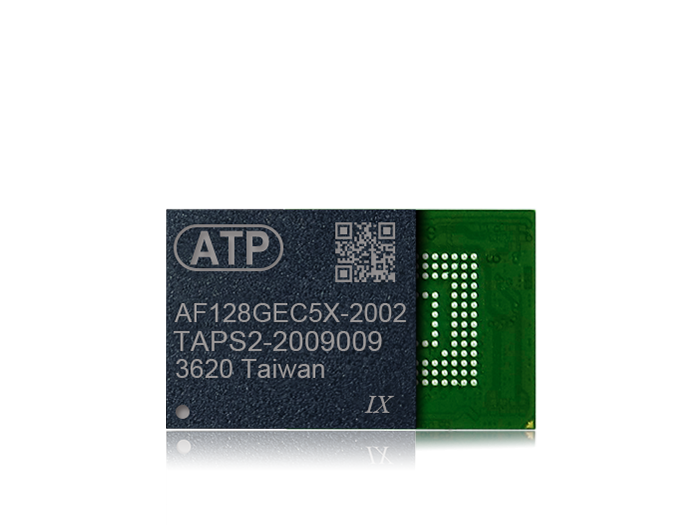
Technology is advancing fast. What is new today may soon be obsolete. In the embedded world, however, many mission-critical systems can continue to run for years, long after parts manufacturers have stopped producing them.
Since its introduction, 3D NAND flash has advanced significantly and has become the industry standard due to its superior cell properties, which offer higher capacity, greater scalability, lower power consumption, and numerous advantages over planar NAND. While 3D NAND will inevitably replace 2D NAND in many appliances, many industries continue to use legacy systems that require planar storage solutions.
Long Live Planar NAND!
3D NAND flash technology has undoubtedly revolutionized data storage. In this increasingly connected world where artificial intelligence (AI), machine learning (ML), and data-hungry applications are becoming the norm, users need more and bigger storage.
The majority of embedded applications such as boot and log file usages, however, do not require huge storage. Also, many systems run on legacy interfaces; thus, converting or re-engineering operations to accommodate the latest technologies will entail huge costs and even disrupt on-going businesses.
Because of its lower density, a native planar NAND solution is more cost-effective compared with converting 3D NAND into a pseudo single level cell (pSLC) solution, which usually entails higher expenses.
To avoid the negative impact of hardware obsolescence on operational costs, many businesses still need planar NAND now, and in the years to come.
2D e.MMC: Tiny but Mighty
Due to its compact form factor, low power consumption and other advanced features, e.MMC is increasingly being adopted in industrial and embedded applications, such as in tiny sensors connected to the Industrial Internet of Things (IIoT). It is also widely used in networking, OS/boot, gaming, rich electromagnetic interference (EMI) environments, such as pachinko machines, and many others.ATP Electronics’ e.MMC solutions are designed and built for space-constrained systems that require storage with rugged reliability and longevity.
To meet the continued demand for e.MMC based on 2D NAND flash, ATP Electronics commits to manufacture these low-capacity storage solutions.
Refreshing News
ATP Electronics’ e.MMC solutions integrate Data Refresh Technology that ensure the reliability and accuracy of data throughout their entire service life. These technologies prevent Read Disturb errors that occur in frequently read (hot) and seldom accessed (cold) areas, which are beyond the capabilities of the error correcting code (ECC). These uncorrectable errors typically occur after the NAND flash accumulates 100,000 read cycles.
- For Hot Zone Disturbance: AutoRefresh Technology
AutoRefresh Technology improves the data integrity of read-only areas by monitoring the error bit level and read counts in every read operation. It detects when the read count is about to exceed the threshold and copies the data in the affected block to a healthy block before the limit is reached. This prevents the controller from reading blocks with too many error bits and averting uncorrectable data damage. After the re-programming operation is complete, the controller reads and compares the data to ensure its integrity.
- For Cold Zone Disturbance: Dynamic Data Refresh Technology
While AutoRefresh focuses on intensive-read areas, Dynamic Data Refresh reduces read disturb and sustains integrity in seldom-accessed areas.Data Refresh is used to address data retention and data loss issues that arise from long-term storage in seldom-accessed areas.
Without affecting front-end read/write performance, Dynamic Data Refresh runs automatically in the background. Bit by bit, it sequentially scans for “cold” areas with flag records. If the number of error bits or read count exceeds the threshold, the data is moved to healthy blocks to prevent the risk of data loss.
The following figure demonstrates how ATP’s AutoRefresh and Dynamic Data Refresh Technologies prevent Read Disturb errors in automotive navigation applications.

Special Features
- Available in native multi-level cell (MLC) and pseudo single-level cell (pSLC) mode configurations
- ULA (Ultra Low Alpha) Compound can resist Alpha particles and reduce soft error rate caused by Alpha particles to 1/100
- Advanced firmware features to ensure data integrity:
- AutoRefresh Technology for Hot Zone (frequently read) Read Disturb protection
- Dynamic Data Refresh Technology for Cold Zone (seldom accessed) Read Disturb protection
- Dynamic Power Management (Auto suspend mode)
- Traceability (QR code)
- Full range of operating temperature ratings
- Commercial (C-Temp): -25 to 85°C
- Industrial (I-Temp): -40 to 85°C
- Extended I-Temp: -40 to 105°C
- Automotive Grade AG2: -40 to 105°C
- Automotive Grade AG3: -40 to 85°C
- Competitive cost
- Advanced Health Report available
Product Specifications
* All performance is collected or measured using ATP proprietary test environment, without file system overhead.
What’s in a Name? Relax, We’ve Got You.
The strength of ATP e.MMC lies not only in the product itself, but also in the ATP name behind it.
With over 30 years' leadership as a manufacturer of specialized memory and NAND flash storage products, ATP is thoroughly knowledgeable in NAND characterization. ATP uses high-quality components and makes sure that screening begins at the integrated circuits (IC) level.
At ATP's own purpose-built factory, the e.MMC is meticulously designed, manufactured, and tested by a team of world-class engineers and highly competent production workers using state-of-the-art technology, including firmware and testing platforms that are unique to ATP.
ATP is in total control over the whole manufacturing process from the time the wafers are received until the final product is produced. ATP conducts internal testing, quality control, Rapid Diagnostic Tests (RDT), and in-house field applications (FA) support.
By assuming responsibility and command over the procedures, ATP maintains control over its value chains and suppliers. To ensure supply, we use longevity planning with a controlled bill of materials (BOM) and buffer inventory management.

Connect With Us. Build With Us.
ATP is known for its best-in-class products as well as value-added services that are available by project support and customer request. ATP also guarantees long product cycles with a longevity commitment.
For more information on 2D NAND-based e.MMC and other ATP flash memory and storage products, visit the ATP website or contact an ATP Representative/Distributor.
